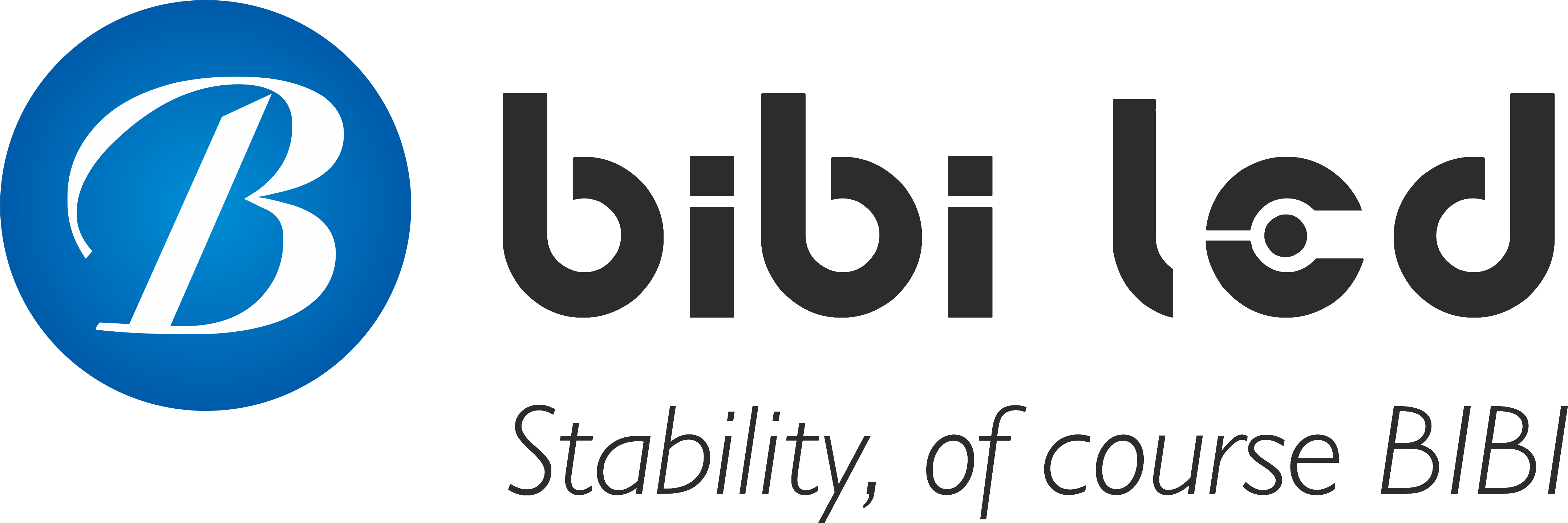Introduction
In the high-speed moving and complex environment of highways, the Écran d'affichage LED is an important tool for information transmission, and the choice of its “dot pitch” is crucial.
So, how do you choose the dot pitch of the LED display screen on a highway? Don’t worry; you will find the answer by reading the article.
Table des matières
1. Brief introduction to the dot pitch of LED display screen

Simply put, it is the distance between the centers of two adjacent pixels, that is, the light-emitting units, on the LED display screen, which is generally measured in millimeters (mm).
This is like the distance between the small luminous dots on a large piece of cloth. There are many ways to know the size of this distance.
Let’s talk about its impact on the display effect first. The dot pitch directly determines the clarity of our eyes when we look at the screen.
Think about it: the smaller the dot pitch, the more pixels can be stuffed into the same display screen.
It’s like you take a net to catch fish; the smaller the mesh, the more fish you can catch. Indoors, if the dot pitch is small, like the P1.25 display, when you look at it closely, the picture is so delicate.
The edges of the image and text are very smooth, and you can’t tell that it is made up of small dots, and the details are very rich.
However, if the dot pitch is large, such as the P10 display, when you look closely, the pixels are very obvious, just like mosaics, and the picture looks rough.
Parlons de la distance de visualisation. The dot pitch and the best viewing distance are closely tied together. The smaller the dot pitch, the closer the best viewing distance; the larger the dot pitch, the farther the best viewing distance.
For example, the P2.5 LED display has a great effect when viewed from a distance of 3-15 meters. If you are too close, your eyes will see those pixels and the picture will feel discontinuous.
If you are too far away, its high-definition advantage will not be reflected. For the P16 display, the best viewing distance must be more than 15 meters.
If you look at it very closely, the graininess is simply unbearable, but if the distance is right, it can also display the information clearly.
In short, the dot pitch of the LED display is a very important parameter that affects the display effect and viewing distance. Different dot pitch specifications also have different application scenarios.
When we choose LED display screens in the future, we must pay more attention to this dot pitch and choose according to our needs.
2. What are the core influencing factors for the selection of dot pitch of LED display screens on highways?

There are many tricks in choosing the dot pitch of LED display screens on highways, which are mainly affected by the following 4 factors.
In fact, there is a rough algorithm. The minimum viewing distance is almost the dot pitch (in millimeters) directly regarded as meters.
For example, if the dot pitch is 10 mm, the minimum viewing distance is about 10 meters. The most suitable viewing distance is the dot pitch multiplied by 3 and then regarded as meters.
For example, the dot pitch of P10 is most suitable for viewing distances of 20-50 meters; the dot pitch of P16 is suitable for 30-80 meters.
This is like watching a movie. If you sit too close, your eyes will be tired, and you can’t see the whole picture clearly.
If you sit too far, you can’t see anything clearly. The same is true when choosing the dot pitch of the LED display screen.
If the dot pitch and viewing distance do not match, the LED display effect will definitely not be good.
The ambient light on the highway changes greatly. When the sun shines during the day, it is bright; it may be a little dark at night. But no matter what, this LED display screen must be clear for people to see.
According to the GB/T 23828 standard, the full-screen white balance brightness must be no less than 8000cd/m².
This is like watching a mobile phone under the sun. The screen must be bright enough for you to see the content clearly.
However, with high luminosité, the choice of dot pitch is very particular.
Small dot pitch, high pixel density, clear picture, but high power consumption; large dot pitch, low power consumption, but the picture may not be so clear.
So, you have to find a balance between pixel density and power consumption, both to ensure brightness and to control costs.
LED display screens installed on highways have different requirements for different locations. If they are installed on both sides of the road, the driver’s visual interference must be considered.
If the dot pitch is too small and the pixels are too dense, the driver may feel dizzy, affecting driving safety; if the dot pitch is too large, it is not clear from a distance. Therefore, it is generally recommended to use a dot pitch of P6 – P10.
If it is installed in places such as toll stations and service areas, drivers will watch it at a close distance, so you can choose a smaller dot pitch, such as P2.5 – P5, so that the picture is clearer and more comfortable to watch.
In addition, when installing, you must also consider the size of the display screen, which cannot be too large or too small and must be coordinated with the surrounding environment.
Now you know that the smaller the dot pitch, the clearer the LED display, but the more expensive it is.
For example, the price of a P0.9 dot pitch may be several times that of a P10. This is like when you go to buy clothes, good quality and new style will definitely be expensive.
But when choosing the dot pitch of an LED display, you can’t just look at the effect; you have to consider the budget. You have to choose the most cost-effective solution within the budget.
For example, if the budget is limited, then choose a slightly larger dot pitch. Although the clarity is not so high, it can also meet basic needs.
If the budget is sufficient, then you can choose a smaller dot pitch, and the display effect will definitely be better.
In short, when choosing the dot pitch of an LED display on a highway, you have to consider these 4 factors comprehensively so that you can choose the most suitable display.
3. The New Market Chance for Advertising Traffic
When you drive on the highway, you can see a variety of LED displays, which display different content and are installed in different places, so choosing the dot pitch is very important.
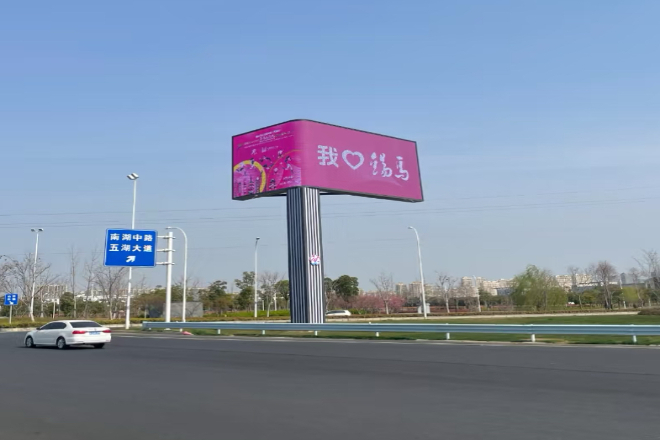
1). Long-distance viewing scene (such as the main line of the highway)
Recommended dot spacing: P16 – P25
Why choose this?
Think about it: on the main line of the highway, the car is driving so fast that the driver must see what is written on the display screen from a long distance.
Otherwise, he may drive too far when he gets closer. The dot spacing range of P16 – P25 can ensure that the words and images on the display screen are still clear at a long distance.
It’s like you are looking at a big sign from a long distance. If the words on the sign are too small and too blurry, you can’t see what is written at all, but if the words are big and clear enough, you can see them at a glance.
- Par exemple:
The dot spacing of P20 is quite suitable. At a distance of 50-100 meters, the driver can easily see the road condition information, advertisements, etc. on the LED display screen.
For example, if there is road construction ahead, the LED display screen will prompt in advance, and the driver can prepare in advance, change lanes or slow down.
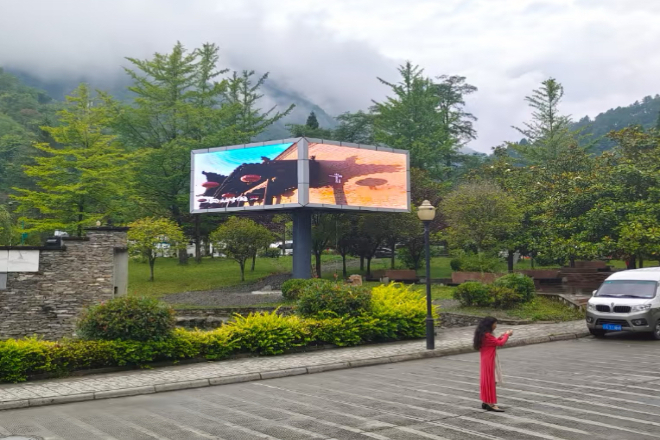
2). Medium and short-distance viewing scenes (such as service areas and toll booths)
Recommended dot spacing: P8 – P10
Why choose this:
When arriving at a service area or toll booth, the car either stops or drives very slowly, and the driver or passenger has time to take a good look at the content on the LED display.
The dot spacing of P8 – P10 can ensure clear images without being too expensive. It’s like when you go to a mall to buy something, you definitely want to see something that is both beautiful and affordable.
This dot spacing range can find a balance between clarity and cost.
- Par exemple:
The dot spacing of P8 is particularly good at a distance of 20 – 40 meters.
For example, the display screen in the service area plays food recommendations and tourist attractions introductions, and passengers can see them clearly from a distance, and they may be attracted to consume.
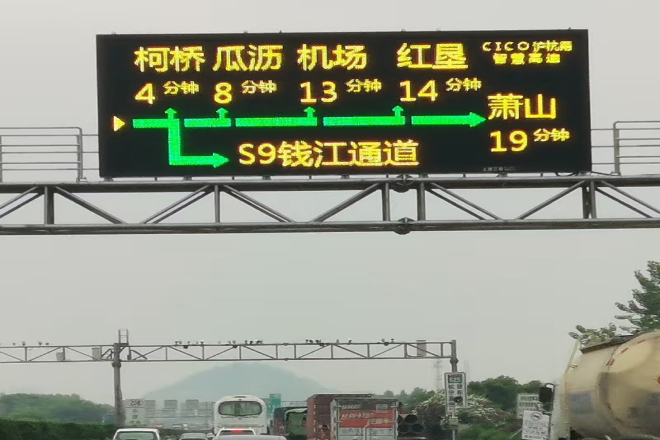
3). Special scenes (such as ramps and bridges)
Recommended dot spacing: It must be adjusted according to the installation height and viewing angle
Why choose this?
The situation in ramps and bridges is more complicated; the display screens are installed at different heights, and people look at the LED display screens at different angles.
If it is installed low and people are close to it, the dot pitch can be smaller; if it is installed high and people are far away, the dot pitch should be larger. It’s like watching a movie.
If you sit in the front row or the back row, the picture effect you see will definitely be different. You have to adjust it according to the actual situation.
- Par exemple:
If the LED display is installed relatively low, people often watch it at a very close distance, so it is appropriate to choose a dot pitch of P5-P6.
In this way, even if you stand under the display, you can see a particularly clear and delicate picture.
For example, for the display on the bridge, some pedestrians may stop to look at the information on it, and at this time, the clear picture can leave a good impression on them.
In short, when choosing the dot pitch of the LED display in different high-speed scenes, you must comprehensively consider factors such as viewing distance, cost, and installation conditions so that you can choose the most suitable dot pitch and make the display play the greatest role.
4. Common misunderstandings and risks in the selection of dot pitch of LED display on the highway
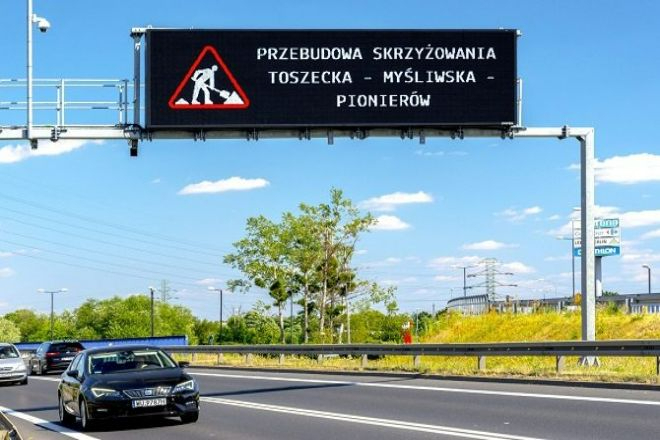
When you drive on the highway, you often see those LED displays with various information on them. However, when choosing the dot pitch of these LED display screens, many people tend to make some mistakes and may face some risks.
Many people think that the smaller the dot pitch, the clearer the LED display screen, and the better the effect. This idea may be correct in general situations, but it may not be true on the highway.
Think about it: the car is driving so fast on the highway that the driver has to see what is written on the LED display screen from a long distance.
If the dot pitch is too small and the pixels are too dense when you look at it from a distance, the picture will be like a mosaic, and it will not be clear at all.
It’s like you look at a small sign in the distance, and the words on it are densely packed. It’s strange that you can see it clearly.
So, although the dot pitch is small and looks clear at a close distance, it may not work at a long distance.
Let’s take the dot pitch of P1.2. When you look at it indoors or at a close distance, the effect is great, and the picture is very delicate.
But if you put it on the highway, the driver will see it from dozens or even hundreds of meters away, and the picture will be all grainy, and no information can be seen clearly.
This not only fails to convey information but may also distract the driver and affect driving safety.
The ambient light on the highway changes a lot. When the sun comes out during the day, it is bright, and at night, it may be dark.
If you only think about the display effect when choosing a display screen and don’t consider the ambient light, it will be a big trouble.
For example, if you choose a display screen with insufficient brightness, the words and images on the LED screen will not be clear when the sun shines during the day, just like there is no display.
This is like you are looking at a mobile phone under the sun. If the screen is not bright enough, can you see the content clearly? Definitely not.
The impact of ambient light cannot be underestimated. If the LED display screen is not clear under backlight conditions, the driver may miss important information, such as road condition prompts, accident warnings, etc.
This is so dangerous. Maybe a traffic accident will occur because of not seeing the content on the display screen clearly.
So, when choosing a display screen, you must consider the ambient light and choose one with appropriate brightness.
The LED display screen with a small pitch does have a good display effect, and it looks high-end and classy. But we also have to look at the price, which is not ordinarily high.
If you blindly pursue the display effect and choose a small-pitch LED display screen, the cost will rise. Moreover, the maintenance of the small pitch LED display screen is also very troublesome, and you have to find a professional team to do it.
This is like buying a luxury car, which looks good, but the maintenance and repair costs are also frighteningly high.
Take the P0.9 dot pitch LED display screen for example, its price may be several times that of P10. Moreover, its maintenance cost is also ridiculously high, which may be more than 3 times that of P10.
Think about it, if your budget is limited and you choose such an expensive display screen, what can you do with the subsequent maintenance costs? Maybe you have to pay a lot of extra money to maintain the display screen, which is not cost-effective.
So, when you choose the dot pitch of the LED display on the highway, you have to be more careful, don’t fall into these misunderstandings, and don’t ignore the potential risks.
You have to consider the display effect, cost, ambient light and other factors comprehensively, and choose a cost-effective one, so that you can not only ensure the effect of information transmission, but also not waste your money.
5. Future trends in the selection of dot pitch of LED display
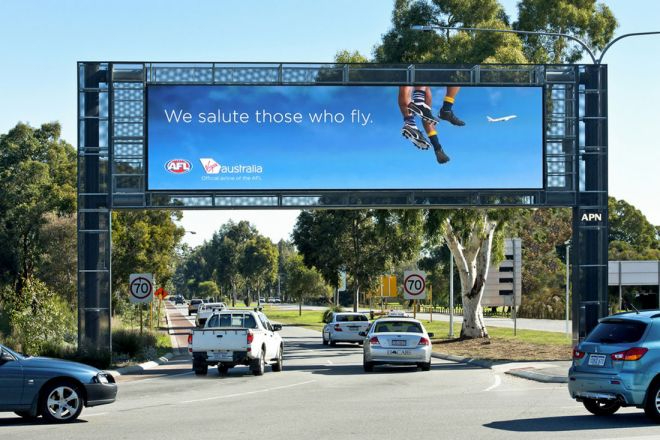
1). Technical evolution direction:
1.1). Intelligent and adaptive adjustment
- Environmental perception and adaptive adjustment:
Future LED display screens will be more intelligent and can automatically adjust the brightness and content according to parameters such as ambient light and vehicle speed.
For example, at night or in low light conditions, the display screen can automatically reduce the brightness to reduce light pollution and energy consumption.
When the vehicle speed is fast, the display screen can automatically adjust the content display mode to make it easier for the driver to see.
This intelligent and adaptive adjustment function will greatly enhance the user experience and make the display screen more in line with actual user needs.
- Data-driven and precision marketing:
In addition to basic brightness adjustment and content display, future LED display screens can also combine big data and artificial intelligence technology to achieve precision marketing and information push.
For example, according to the type of vehicle, driving trajectory, and other information, the display screen can push personalized advertisements or road conditions information to improve the accuracy and effectiveness of the information.
1.2). Green energy-saving trend
- High-efficiency display screens become mainstream:
With the increase in environmental awareness and the rise of energy costs, high-efficiency display screens will become mainstream in the future.
LED display screens with energy efficiency level 1 will be favored by more users because they can reduce energy consumption and operating costs while ensuring the display effect.
- Energy-saving technology and innovative application:
In order to achieve green energy-saving goals, researchers are constantly exploring new energy-saving technologies and innovative applications.
For example, using more efficient LED chips, optimizing heat dissipation design, and using renewable energy such as solar energy to supply electricity.
The application of these technologies will further improve the energy efficiency level of LED display screens and reduce the impact on the environment.
6. Conclusion
In summary, the selection of dot spacing of LED display screens on highways is not a simple technical parameter decision, but the result of weighing multiple factors.
From viewing distance, ambient light, installation conditions to cost control, each step affects the final effect and safety of use.
In the future, with the development of technological progress and intelligent trends, more energy-efficient and more adaptable LED display solutions will become mainstream.
Enfin, si vous souhaitez en savoir plus sur les écrans LED, Contactez nous s'il vous plait.
